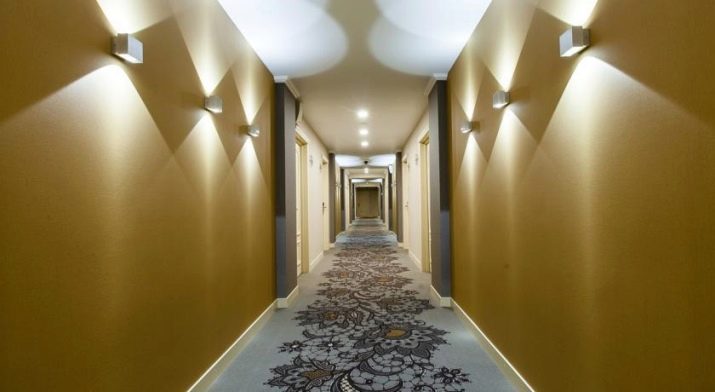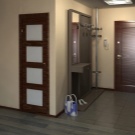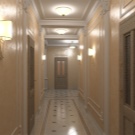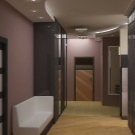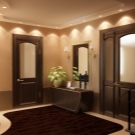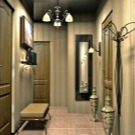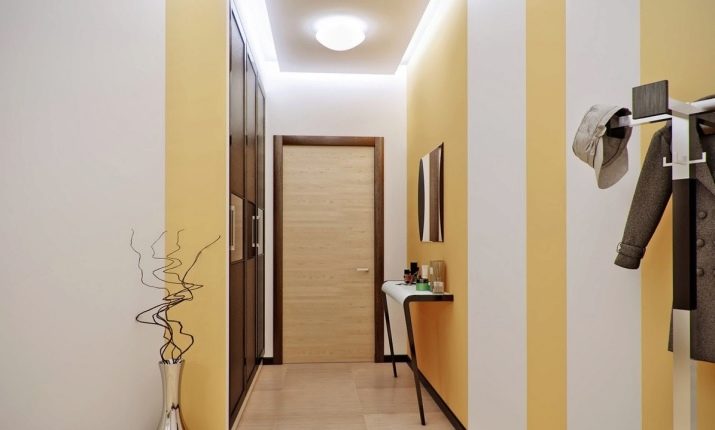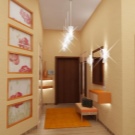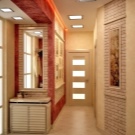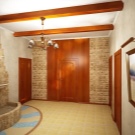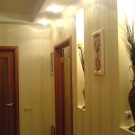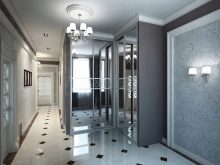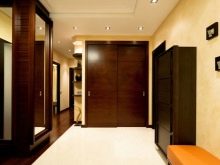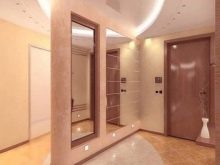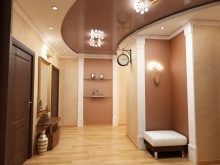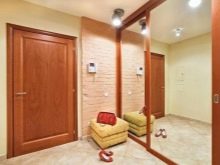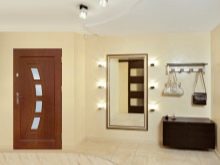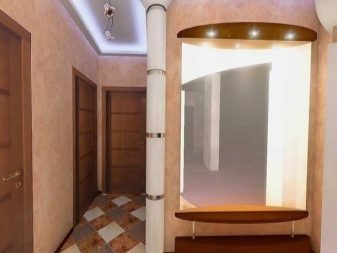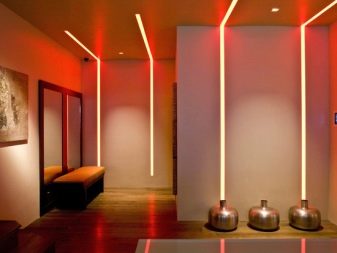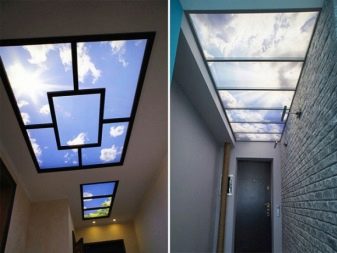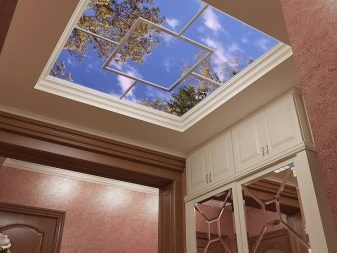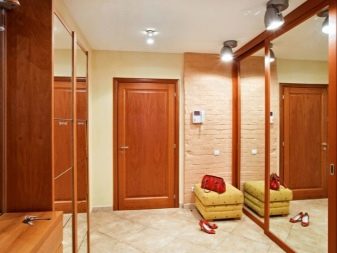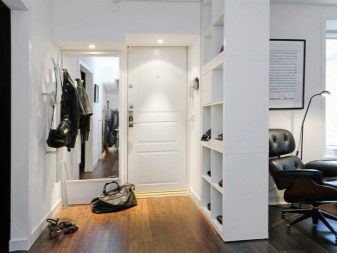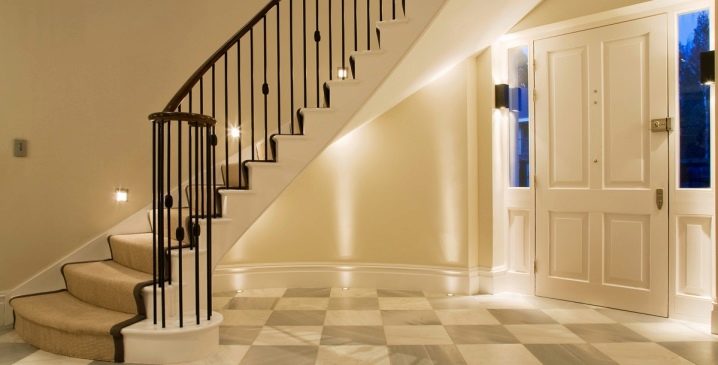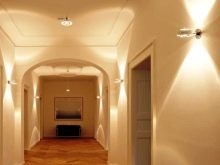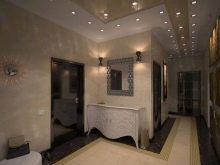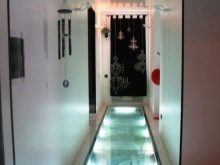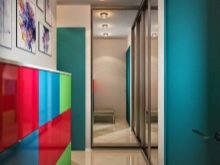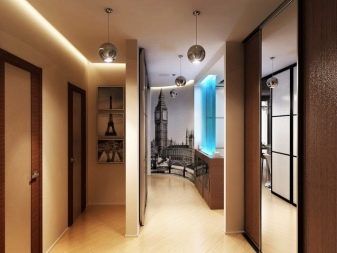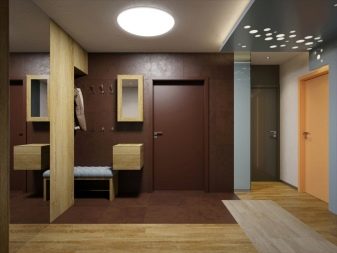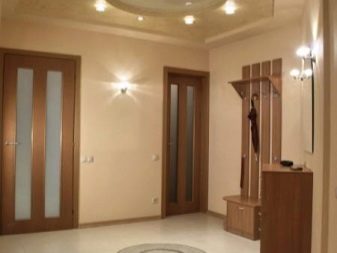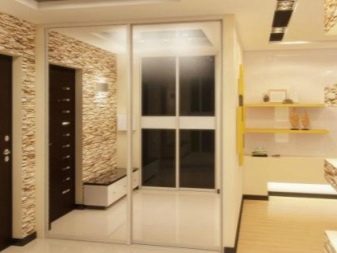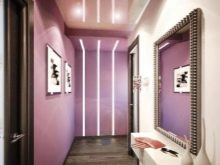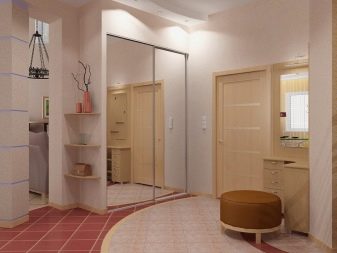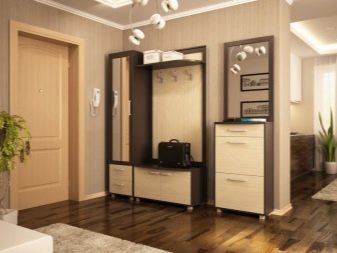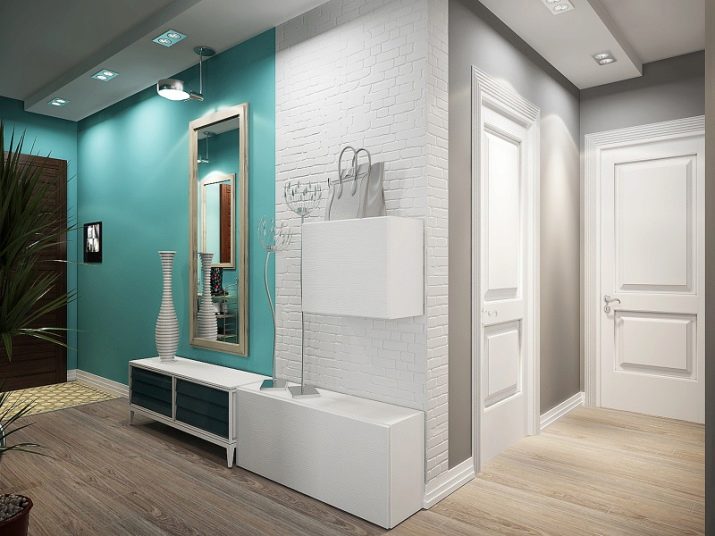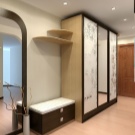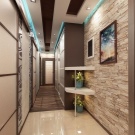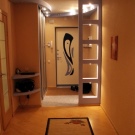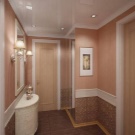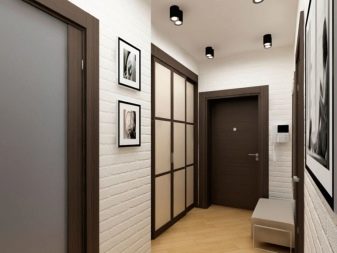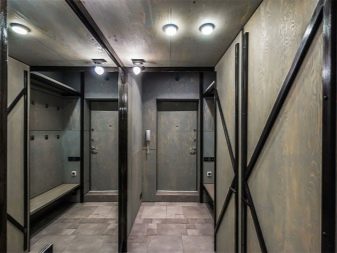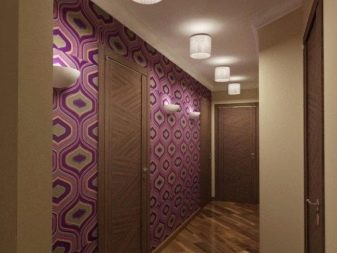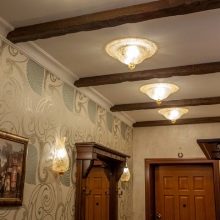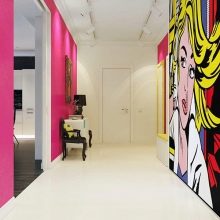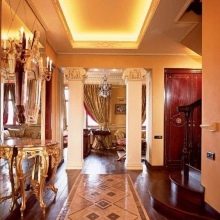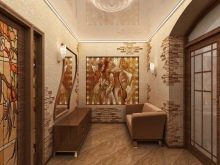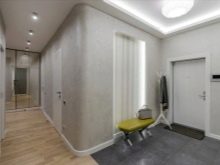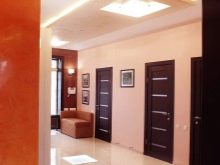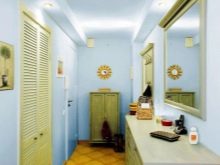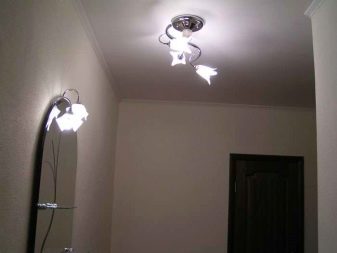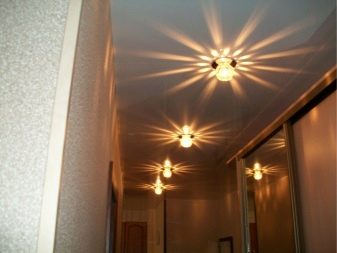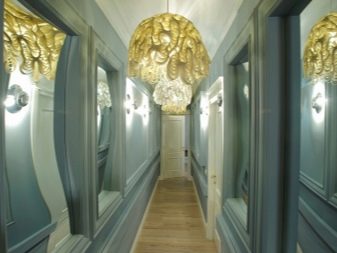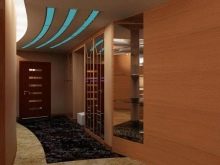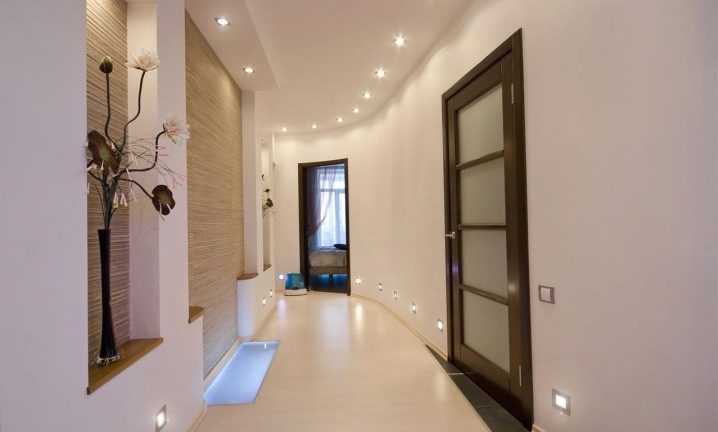Lighting in the hallway

The theater starts with a hanger, and the house starts with a hallway. And well, if your home begins with a large, naturally lit hall. And if this is the usual narrow corridor? Add to this the right lighting so that guests can appreciate the beauty and comfort of your home without running into corners, a closet or a coat hanger. Yes, and you, opening the door from the street and turning on the light in the front (as they said in the old days), with peace will be able to say “I'm at home! ".
Lighting Requirements
The lighting of the first room of your house or apartment will depend on its size and the presence (absence) of the adjacent corridor.
There are general rules and guidelines for lighting:
- Choose a level of illumination so that you can clearly see your reflection in the mirror without a shadow, but at the same time do not blink from too bright light.
- In this case, the lighting should hide the flaws or lack of repair. Diffused light from frosted lamps will help to distract the eye from an unwanted object.
- The light level in the first and adjacent rooms should be approximately equal in intensity. This will make your home one.
- For convenience and energy saving in large halls, make several groups of light sources with different switches.
- In long corridors, install pass-through switches that can be turned on at the beginning of the corridor and turned off at the end.
- If there is a separate dressing room in the hallway, then there should be its own lighting.
- Do not place sconces on the walls of the corridors where you will constantly walk and you may accidentally touch and break wall lights. Do not install hanging ceilings in rooms with low ceilings for the same reason.
- Mirror highlight separately.
- When choosing a light bulb, pay attention to its spectrum. Incandescent lamp with a yellow spectrum is most pleasing to the eye.With a cold blue spectrum, you are unlikely to be able to create a cozy entrance room.
Kinds
Illumination of the hallway does not have such stringent requirements as other rooms. But here, too, there is a species diversity on which the choice of lamps and the method of their installation depend.
- The area of propagation of light can be general and local. At the same time in the interior of these two types can be combined.
- By origin, nature lighting is natural and artificial.
- By the principle of work - always on (off) or with a motion sensor.
What to choose lamps?
The task of the general light - to cover the entire area of the hallway. In a small square room it is often the only source. To solve the problem, you need to think about what to choose lamps.
- Chandelier under the ceiling - a classic version. In a large square hall a multi-tiered hanging chandelier will look beautiful and out of place. In a small front chandelier should be compact. In shape - round, square. Anyone, if only came to the interior and gave a sufficient amount of light.
- Sometimes sconces can act as independent general lighting. And in the smallest hallway, try installing a pair of wall lights for even illumination. Do it better at a height of about 2 meters.
- To install spotlights Stretched or suspended ceilings are needed, which will also provide a reflective effect, which will give additional light.
- The spot lamp can be installed both on the wall and on the ceiling. With the help of a wall spot, even general lighting can be achieved, since several lamps mounted on the same rail can easily turn in different directions and can completely illuminate the hallway with a corridor.
Local, local lighting can be installed on the wall, near the mirror, on the mirror, be built into the cabinet, illuminate the shelf or picture. Such an organization of space allows you to quickly find the right things and carefully examine yourself in the mirror before leaving the house.
To the above sconces, spotlights and spotlights as local lights can be attributed to such a design move, such as the penetration of light through doors with stained glass or frosted glass, as well as corrugated doors. Because of the included light or natural light penetrating throughsuch a door light will look very nice in any hallway.
By nature, lighting can be natural. This can be achieved if a window is cut into the roof of your private house above the entrance door. This kind of light penetration is called a flashlight. It can be in the form of a simple frame or with a complex configuration. With such a design, during the whole daylight the sun will look into your hallway or drum rain on the glass, leaving behind water patterns.
It's impossible to do this in an apartment, but if you like the idea, you can make an artificial lantern. Beautiful interior lighting false ceiling can create the effect of a sunny day or the starry sky.
We are accustomed to the fact that the principle of operation of our lamps - on and off using a switch. Modern lamps produced with movement sensors, you can install them yourself. In order for them to work, you do not need to constantly touch the switch, it is enough just to go under the lamp. So, no need to think about where to install switches in a long corridor and hallway so that it is convenient to use them.In addition, this device will save your money by saving electricity.
Mounting options
At the place of attachment, the lighting can be ceiling, wall, built-in furniture and even floor. If you have a small hallway with high ceilings, then it seems to be a well. In this case, designers offer:
- make suspended or suspended ceilings with spotlights around the perimeter. They will visually enlarge the room and make it cozier;
- install several single lamps on a long leg in high-tech style. The ceiling visually approaches and ceases to be a well;
- use the spots, turn the lamps down and onto the walls. The entrance hall will appear larger and lighter.
In the hallway with low ceilings, install flat ceiling lights or on a very short leg. The hall can be fully illuminated with a chandelier from the ceiling, and with spots, and with LED lamps, and with spotlights. Here a lot will depend on the overall design of the room.
Speaking of wall lighting, we mean, above all, sconces. But the adjacent corridor can be illuminated with the help of LED lamps built into a plastic matte box.And LED strips will help to make the backlight embossed. This illumination can be placed under the ceiling, above the floor or in the form of a pattern across the wall.
Since the backlight will be in the field of your view, any imperfection will be visible, which means that all work must be done very carefully.
In the wall, as in the ceiling, you can also embed fixtures. If your walls are finished with gypsum plasterboard or plastic, then the built-in lamps will resemble portholes in a maritime theme or scatter by solar dandelions across the wall. The built-in lighting in the furniture will help locally focus attention on some element of the decor: a mirror, a closet, a picture, a panel, a photograph. At the same time in the cabinet you can bring the spotlights to the open shelves or put a solid horizontal lamp on top of the cabinet. The light can also turn on from the photocells when closing and opening the cabinet.
The most unusual solution is the backlight located on the floor. To do this, LED matte lamps are placed below the floor level so that they appear as one with the flooring. This kind of light should be placed around the perimeter of the corridor and packed in a box of transparent, durable plastic.
In any case, all mounting options should realize your ideas on the hallway lighting in such a way that it is safe to use, functional to use and beautiful.
Light zoning
What else can you offer for this very beauty? Especially if your hallway is non-standard sizes. A technique called room zoning will help answer this question. Visually determining what you need this or that piece of the corridor, its functions, select the lighting specifically for this area.
First zone – directly at the front door. So, there should be a switch and a lot of light, because you should not look for your clothes and shoes in the dark.
The second zone is a mirror. Here you can place the sconces above the reflective surface or on the sides. In addition, for the mirror, you can buy small lamps on batteries and stick directly on it. Modern mirrors are available with pre-built spotlights. With this method of attachment it will seem that there are twice as many luminaires as they actually are and this will make it even brighter.
The main thing - when choosing a lamp for the mirror do not forget that:
- the light should not fall behind, otherwise the shadow will not allow you to do makeup, fix your hair and examine yourself before leaving the house;
- the light spectrum should be a natural yellow color, otherwise something blue or white will look at you from the mirror;
- the lighting should be soft, not too bright, do not dazzle the eyes with an open lamp (ideal is a lamp with a flexible bracket or spot);
- The height of the light points depends on the growth of those who use the mirror, but the light should not fall from below and be above two meters.
Third zone - wardrobe, hanger, shelf. And electric lamps can be built into pieces of furniture.
Fourth zone in the large hall - a chair on which you can sit down to change the shoes. Next to it you can put a floor lamp and the feeling of warmth at home will not leave you.
Fifth zone - corridor. Here, as mentioned above, there may be a ceiling, and wall, and floor light. With the help of decorative lighting, you will not only get rid of the long dark corridor, but also create a romantic atmosphere for your home. To illuminate dark corners, use the spots.
In this case, your lamps will unite in several groups, each of which will need a separate switch. Or you can use lamps with motion sensors.
Colors and styles
In order for your entrance hall to look cozy in any design, you need to choose the right colors for the decor and lighting.
If your room for guests and households is small, then it should not be dark in color, otherwise it will visually decrease further. To visually enlarge it, make the walls light and the furniture darker. If there are several doors in the corridor, paint them in bright colors against the pale walls. Such a decision will distract the eye from the small hallway, and it will seem more.
If you recreate a particular style, the colors should match it.
- Minimalism associated with pale colors. It can be white, black or its shades. All this is combined with natural materials. Here chandeliers and other lamps should be of simple forms without excesses.
- High tech - it is silver metal and glass. The style is so diverse that you can create a wonderful hallway. To the main silver you can add a large number of colors.Relevant lamps from floor to ceiling in all colors, but monophonic.
- Pop Art - this lighting is bright, colorful. A chandelier with several multicolored balloons and LED ribbon are appropriate for this style.
- Classicism - This is brown and sand sconces, decorated with gold, forged crystal chandelier. And here the dimensions of the hallway are crucial. Such a solution is possible in the lobby.
- Empire also requires space. There are no halftones here. Bright gold or red, green or blue lights will be a great accent in your hallway.
Light as a means of corridor correction
Not always, we get such premises that we are completely satisfied. We'll have to think about how to make a cozy one from a small, narrow or long hallway; how to illuminate the L-shaped corridor, so as not to stumble upon its corners; how to zone space in a square hallway so that the square does not seem empty.
- With a high ceiling, adjust the height by setting the spots. By adjusting the repetition angle of the fixtures so that the light falls on the walls, we divert the view from the ceiling and it will appear lower.
- A more expensive option - with suspended or suspended ceilings. It is used to lower the ceiling, to hide construction defects, or to increase the space with the help of light from ceiling lights reflecting from such a ceiling.
- A narrow and elongated hallway can be visually enhanced with a brighter light, which should intensely illuminate the walls.
- If your corridor seems dark and uninteresting to you, make it a runway of LED strip or a number of lamps.
- In the L-shaped hallway use lamps of the same style, but different appearance. So you can separate one zone from another.
- Do not forget the light that reflects from the mirror! Proper location of the lamps can greatly increase the room.
- A classic chandelier on a long pendant in the center of a square hallway focuses attention on itself and distracts from large space.
So, with the help of light, you can correct what you do not like in your hallway or pay attention to the disadvantages.
Modern interior design ideas
In modern newly-built apartments, the entrance hall is not an isolated room to enter the house,and more or less large hall. It has more natural light from adjacent rooms, which means fewer problems with artificial lighting. When building or buying your home is still easier and more design options.
Dark, small hallways in Soviet-style apartments, such as the Khrushchev, are more demanding of artificial lighting. We talked a lot about how to increase the space with the help of light. Here are some more tips:
- To make the hallway light, use lamps of the yellow and white spectrum. Blue lamps will make the light dead.
- Energy-saving lamps with matte white light will not irritate and dazzle the eyes.
- Use secondary light by installing interior doors with glass openings.
- If the mezzanine is mounted in the hallway, paint their lower partition with bright shiny enamel and install spotlights around the perimeter. When you turn on the light the ceiling will not put pressure on you. And because of the reflection of enamel, it will seem even higher.
- Decorative floor lighting around the perimeter will increase the area of the room and it will not seem closed.
- Decorate long corridors with paintings, photographs, panels, the outline of which you highlight with LED lamps or garlands.
- If there are niches in the hallway, use them for additional spot lighting.
Looking at the photographs of other people's hallways on the Internet, you will definitely find the one that will push you to your own decision. And after some time, looking at the result of your work, you say “I'm at home! "
How to choose the appropriate lighting for your hallway, you will be prompted in the video below.
